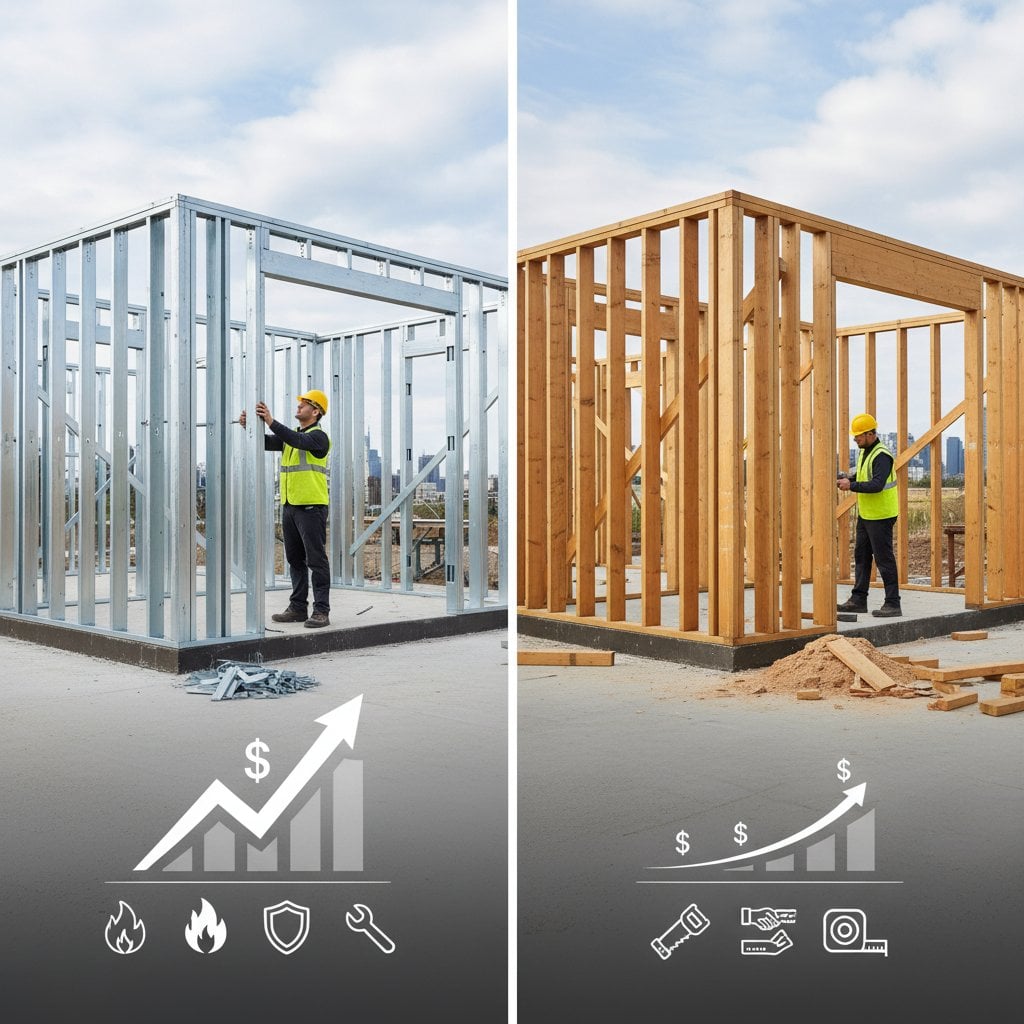Understanding the 2025 Tariffs
The United States government plans to implement new tariffs in 2025 on a range of imported goods, including essential construction materials. These measures aim to protect domestic industries by imposing duties on imports from countries such as Canada, Mexico, and China. Builders and homeowners must prepare for these changes, as they directly influence material availability and pricing.
Tariffs function as taxes on imported products, increasing their cost to importers who then pass the expense to consumers. For the construction sector, this means higher prices for foundational items that form the backbone of projects. The policy targets vulnerabilities in supply chains exposed during recent global disruptions.
Key materials under scrutiny include lumber, often sourced from Canada, and steel from various international suppliers. Copper, vital for wiring and plumbing, also falls into this category due to reliance on foreign production. These tariffs represent a shift toward encouraging local manufacturing, but they create immediate challenges for ongoing and planned builds.
The Direct Impact on Construction Costs
Analysts predict that 2025 tariffs will elevate overall construction costs by 10 to 25 percent, depending on project scope and material dependency. For a typical residential build, this could add thousands to the budget, straining resources for both contractors and clients. Commercial projects, with larger material volumes, face even steeper proportional increases.
Lumber prices stand to rise by approximately 20 percent, as duties on Canadian softwood imports tighten supply. Steel, critical for structural frameworks, may see a 15 percent uptick due to tariffs on rolled products from Asia and Europe. Copper wiring costs could climb 10 to 12 percent, affecting electrical and plumbing installations across all build types.
Beyond raw increases, these tariffs introduce volatility. Supply chain delays from rerouting imports or seeking alternatives extend timelines, adding indirect expenses like labor overruns and storage fees. Homeowners planning renovations or new homes encounter these effects in bids from local contractors, who adjust quotes to cover anticipated hikes.
Small-scale builders feel the pinch most acutely, as they lack the leverage of larger firms to negotiate bulk deals. Larger operations might absorb some costs initially, but eventual pass-through remains inevitable. The cumulative effect disrupts market stability, prompting a reevaluation of project feasibility in high-import regions.
Factors Amplifying the Cost Surge
Geopolitical tensions contribute to the tariff's severity, as trade negotiations with key partners remain unresolved. Domestic production capacity lags behind demand, limiting quick offsets to import reductions. Inflationary pressures from energy and labor costs compound the issue, creating a perfect storm for the industry.
Regional variations play a role; coastal areas with port access see faster price transmission from international markets. Inland projects might benefit slightly from shorter domestic hauls, but overall exposure remains high. Environmental regulations on logging and mining further constrain local alternatives, pushing reliance on taxed imports.
Homeowners must consider long-term implications, such as resale value tied to build quality amid rising expenses. Contractors face competitive pressures to maintain bids, potentially cutting corners unless guided by informed clients. Awareness of these dynamics empowers better decision-making from the outset.
Actionable Strategies to Mitigate Rising Costs
Proactive planning forms the foundation of cost control in this tariff environment. Begin by reviewing project timelines to lock in materials before January 2025 implementation. Early procurement secures current pricing and avoids rush fees during peak adjustment periods.
- Compare multiple suppliers to identify those with domestic sourcing options or pre-tariff stockpiles.
- Negotiate flexible contracts that include clauses for price adjustments based on material indices.
- Explore alternative materials, such as engineered wood substitutes for lumber or recycled steel blends.
- Build contingency funds into budgets, allocating 15 percent extra for tariff-related variances.
- Consult industry forecasts from trade associations to anticipate fluctuations and adjust scopes accordingly.
Supplier diversification reduces risk; maintain relationships with both international and local vendors. Domestic mills ramp up production in response to tariffs, offering opportunities for cost-competitive bids. Verify certifications to ensure quality matches imported standards.
Contract adjustments prove essential for protection. Include escalation clauses tied to specific commodity prices, allowing equitable sharing of unexpected rises. Fixed-price agreements with trusted partners provide certainty, though they require upfront commitments.
For homeowners, value engineering optimizes spends without sacrificing durability. Prioritize essential structural elements over aesthetic finishes, deferring non-critical upgrades. Professional consultations reveal hidden savings, such as efficient designs that minimize material use.
Long-Term Planning for Budget Resilience
Investing in sustainable practices yields dividends beyond immediate savings. Energy-efficient builds qualify for incentives that offset tariff burdens, enhancing overall value. Modular construction techniques reduce on-site material needs, streamlining logistics amid supply constraints.
Monitor policy developments through reliable industry channels, as tariffs may evolve with trade talks. Build networks with peers to share insights on emerging suppliers and hedging strategies. This collaborative approach fosters resilience in an unpredictable landscape.
Ultimately, these steps transform challenges into opportunities for smarter building. Homeowners and builders who adapt early maintain project momentum, delivering quality results without prohibitive overruns. Forward-thinking preparation ensures that 2025 tariffs become a manageable hurdle rather than a barrier.










